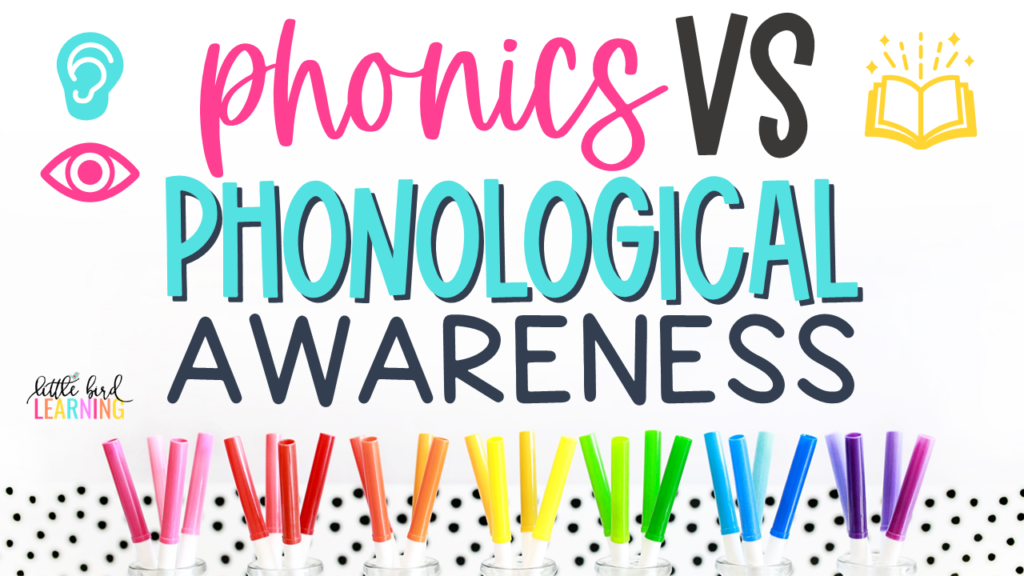
Phonics and phonological awareness are both essential for reading success, so it’s important that students learn both. Although the terms are commonly mixed up, they are not not interchangeable. In this post, we’ll dive into phonics vs phonological awareness to better understand the differences between the two and why both are essential in your literacy lessons.
Phonics vs Phonological Awareness: What IS the difference?
Phonology is the study of sounds. Phonological awareness refers to the ability to process, isolate, and manipulate the sounds of language while phonics involves learning how letters correspond to sounds. Both are essential for students to become effective readers and writers.
The most basic difference between phonological awareness and phonics is that phonological awareness involves sounds only. Letters are not part of a phonological awareness activity. In fact, phonological awareness activities may be presented as auditory activities only or may involve a few manipulatives to represent parts of oral language. While phonics instruction focuses on teaching students to connect the sounds of speech with printed letters through systematic and explicit instruction. Through phonics, students learn how to decode, or sound out, words as well as to spell words by applying what they have learned about the phonetic code. Phonics forms a bridge between phonological awareness and comprehension of printed material.
Phonological Awareness: Processing, Understanding, and Manipulating Speech Sounds
Phonological awareness refers to the ability to process, understand, and manipulate speech sounds. Phonological awareness is an umbrella term that includes several subskills: (1) Word Awareness, (2) Syllable Awareness, (3) Onset-Rime, (4) Rhyming and Alliteration, and (5) Phonemic Awareness. Let’s break that down:
- Word Awareness – The ability to hear and distinguish words in the speech stream. To practice word awareness, present students with a short sentence and ask students to count how many words they hear in the sentence. To make it multisensory, provide students with manipulatives to represent each word in the sentence such as counters, buttons, or erasers.
- Syllable Awareness – The ability to hear, isolate, and blend syllables to compose or decompose words. To practice syllable awareness, say a word and ask students to count the number of syllables they hear in the word. To make it multisensory, prompt students to touch their chin and feel their chin drop as they orally repeat the word. Another way to practice syllable awareness is to decompose or compose compound words orally.
- Onset-Rime – The ability to compose and decompose a word into onset and rime. Onset is everything that precedes the vowel in a one-syllable word. Rime includes the vowel and everything after the vowel in a one-syllable word. For example, in the word “stick,” the onset is “st” and the rime is “ick”. To practice onset-rime, students can be presented with the onset and rime orally and asked to blend them together to say the word smoothly.
- Rhyming and Alliteration – Rhyming is the ability to identify and create words that have the same rime. Alliteration is the ability to identify and produce words that have the same beginning sound (or onset). To practice rhyming and alliteration, orally read aloud or sing nursery rhymes, songs, or poems and have students notice examples of rhyme and alliteration.
- Phonemic Awareness – The ability to attend to, isolate, manipulate, add, and delete individual sounds in a word (phonemes). Phoneme awareness is another umbrella term underneath the overall umbrella of phonological awareness.
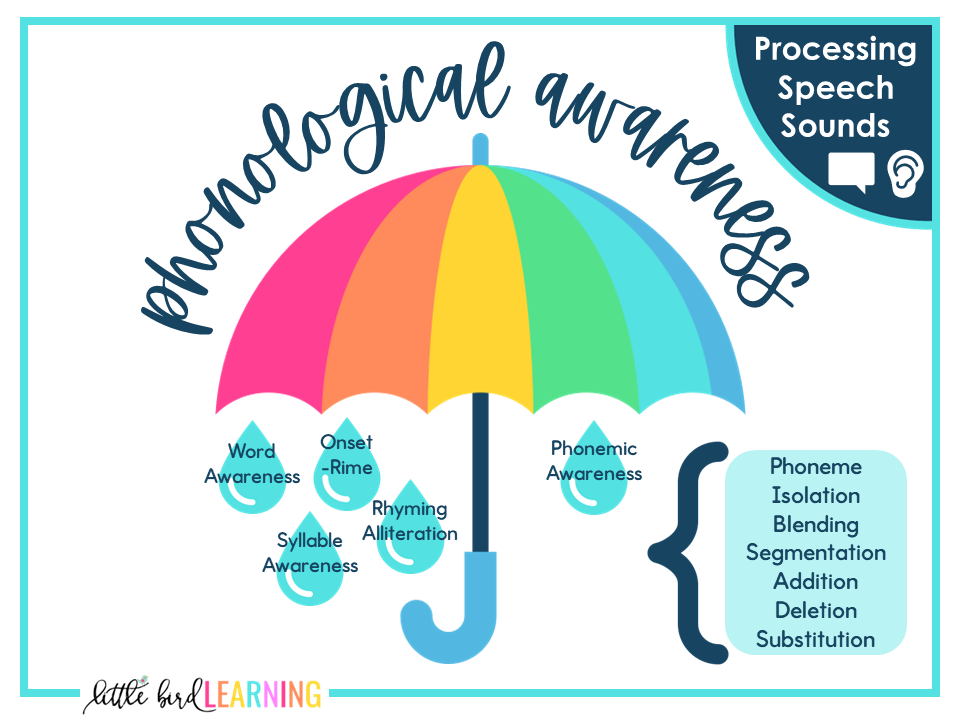
Phonemic awareness includes six subskills that are organized from simple to more complex. Basic phonemic awareness includes phoneme isolation – the ability to isolate individual sounds within a word. This skill can be further scaffolded by progressing from the simplest skill of isolating the initial sound to the slightly more complex skill of isolating the final sound to the most complex skill of isolating the medial sound in a word.
At the next level, students work on phoneme blending – the ability to blend sounds together to smoothly say a word. My favorite way to practice phoneme blending is with a game called “Secret Word Pictures.” I present a secret word by orally segmenting the phonemes in the word (e.g., /s/ /t/ /i/ /k/). Then, students draw the secret word on a sticky note and post it to a picture frame on the board. Students love to see each other’s drawings of the secret word!
Phoneme segmentation is the ability to break a word down into its individual phonemes. For example, the word “cat” can be segmented into: /c/ /a/ /t/. To practice phoneme segmentation, say a word aloud and ask students to break the word down into its individual phonemes. To make it multisensory, try using sound boxes by having students represent each sound in the word using a manipulative such as a counter, pom pom, or mini eraser. Students push a counter into each box of the word as they orally segment the sounds in the word.
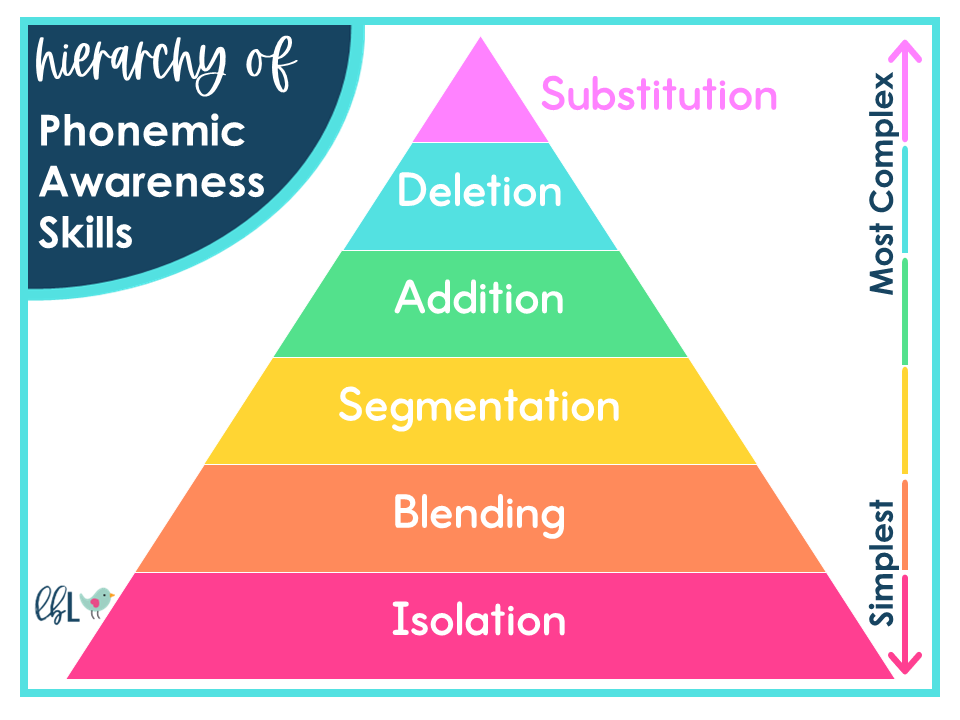
Phoneme addition is the process of adding a sound to a word. This skill can also be scaffolded from simple to complex by first adding a sound to the beginning of a word then advancing to more complex skills such as adding a sound to the end of a word or forming a complex blend.
Phoneme deletion is the process of deleting a sound within a word. At the basic level, students practice deleting an initial phoneme (e.g., “cat” without /k/ becomes “at”). At the more advanced level, students practice deleting phonemes from complex consonant blends (e.g., “stick” without /t/ becomes “sick”).
Phoneme substitution is the process of switching out 1 sound in a word to form a new word. For example, when you change the /i/ in “stick” to /a/, the word becomes “stack.” Sound boxes are perfect for practicing phoneme substitution because students can see and feel where the change occurs in the word! Begin by modeling the skill for students using a sample word then provide students with an opportunity to practice using a new, but similar word. Click the button below to grab my sound boxes for free!
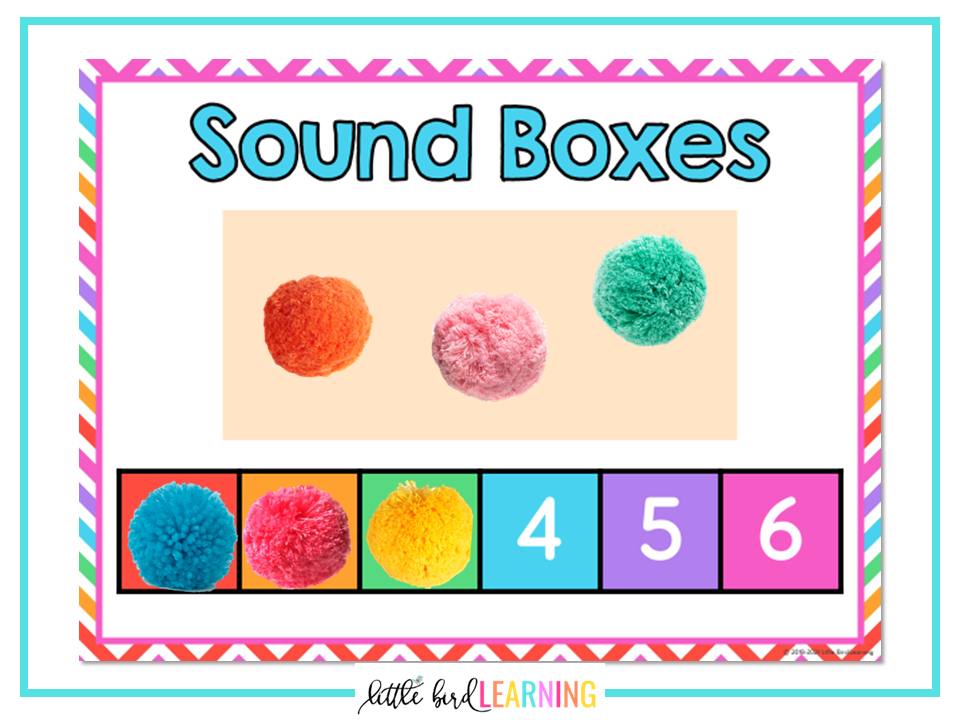
Phonics: Mapping Speech Sounds to Printed Letters
Phonics is the ability to map speech sounds to printed letters. In order to read well, children must first understand the relationship between oral language and written language. This process is called decoding, and it begins with teaching children how to recognize and sound out individual letters. Again, the key difference between phonological awareness and phonics is that phonics introduces written letters. To paraphrase Dr. David Kilpatrick, a leading researcher in the field of Dyslexia and educational psychology:
Phonological awareness builds a shelf in the brain for students to attach letters to during phonics instruction.
David Kilpatrick, PH.D., Equipped for reading success
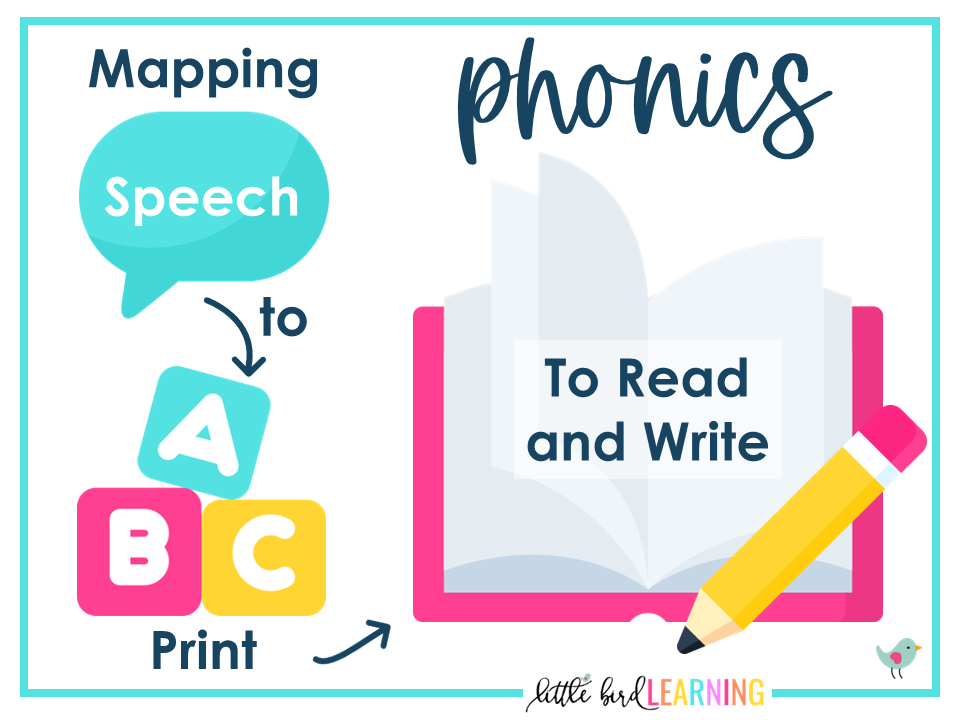
👉 Have you read my post on teaching phonics step-by-step yet?
The Best of Both Worlds
Phonics and phonological awareness are both essential components in a literacy lesson. While phonological awareness helps students learn to attend to the individual sounds within a word, laying the groundwork for the alphabetic principle, phonics teaches students to connect sounds to printed letters, making the alphabetic principle clear. It’s the best of both worlds!
Read More about Phonics and Phonemic Awareness as Essential Components of Reading:
- Teaching Children to Read National Reading Panel Report (2001)
- Put Reading First, 3rd Edition by the National Institute for Literacy (2006)










Leave a Reply